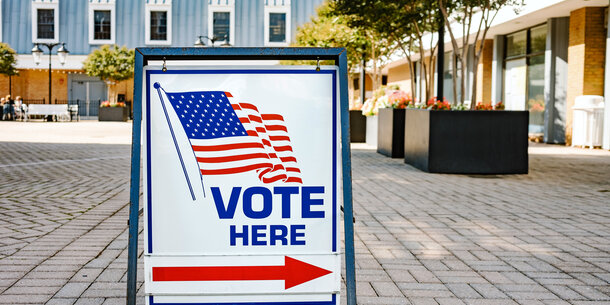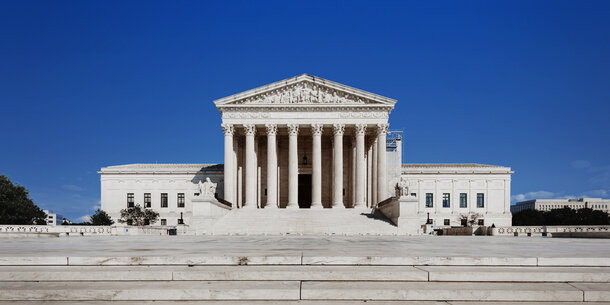As Election Day 2022 nears, voting has already kicked off in several states — mail ballots are being sent out, and early in-person voting has begun. This year’s midterms mark the first major election since lies about the 2020 election sparked a legislative assault on voting rights by state lawmakers. Between January 1, 2021, and September 12, 2022, at least 21 states enacted 42 laws restricting access to voting. Of those, 33 restrictive laws are in effect for the midterms in 20 states.1
These laws will have differing impacts on voters. Some are omnibus bills with multiple provisions that restrict voter access, while others are narrower in scope. But taken together, they represent a dramatic restrictive shift in the rules that govern elections in many states since 2020.
Our research indicates that racial resentment may have played a role in this barrage of restrictive voting legislation. Legislators in the whitest districts of the most racially diverse states have been the most likely to sponsor anti-voter legislation. But lawmakers have justified their push for restrictive legislation on the basis of conspiracy theories that gained traction during and after the 2020 election. In short, lawmakers have changed the rules in order to address the lie that the 2020 election was “stolen.”
Mail Voting Restrictions Justified by False Claims of Voter Fraud
The majority of the restrictive laws passed since 2021 coalesce around the conspiracy theory that increased mail voting led to rampant voter fraud. Several states expanded mail voting options in 2020 to ensure safe access to the vote during the pandemic. The expansion enabled the highest voter turnout rate this country has seen in over a century. While the high turnout facilitated by mail voting should have been cause for celebration, it inspired a backlash instead. There was no significant fraud in the 2020 elections, in mail voting or otherwise. Nonetheless, false claims quickly proliferated, and lawmakers seized on them to justify new voting restrictions.
The new restrictions limit mail voting in a myriad of ways, including shortening the deadlines to apply for or return a mail ballot, imposing strict identification requirements on mail ballot applications or return ballots, limiting or prohibiting the use of drop boxes, and even criminalizing election officials who send out unsolicited mail voting applications.
While we will not know the full impact of these new restrictions until after November, we already saw evidence of their impact during the 2022 primaries. For example, just one of the many restrictions put in place by Texas Senate Bill 1 requires each voter to put either their driver’s license number or the last four digits of their social security number on their mail ballot application. If the number they provide does not match the number on file in their voter registration record — which can happen for a variety of reasons even if the voter enters accurate information — the application is rejected. That rule change contributed to a jump in Texas’s mail ballot rejection rate to 12 times the rate in the 2020 general election.
There are at least 21 new restrictions on mail voting in effect in 2022. They may not all have the dramatic impact of TX S.B. 1, but the sheer number of additional hurdles some voters face when casting a ballot by mail is staggering. And while mail voting may lose the popularity it saw during the height of the pandemic, it remains the only option for some voters, including voters with disabilities, elderly voters, voters who lack convenient or affordable transportation to polls, and student voters away from their permanent address.
Faulty Voter Purges Justified by False Claims of Ineligible Voters Remain on Voter Rolls
Another trend in the restrictive laws passed since 2021 is legislation that risks faulty voter purges. At least six states enacted six new laws in this category that are in effect for the midterms. Some of these laws require election officials to identify supposedly ineligible voters through unreliable public safety or national databases and often provide no notice to the voter before removal from voter rolls.
These voter purge laws are a response to two related conspiracy theories that ballots were cast in the name of dead voters or voters who moved but who remain on the rolls and that large numbers of individuals who are not U.S. citizens registered and voted. These same myths have motivated coordinated canvassing efforts around the country, where groups are going door to door to confirm whether voters registered to an address actually live there, sometimes even asking for a signed affidavit to that effect. Laws that allow for faulty voter purges increase the risk that eligible voters will show up to the polls only to find they are unable to vote.
It is important to note that while many of the voter purge laws passed since the beginning of 2021 are in effect for the midterms, federal law prohibits systematic removal of voters within 90 days of the November election, and that date passed in August. Still, the impact of any purges that have already taken place may not be felt until voters arrive at the polls and find they have been removed from the rolls.
The below chart categorizes by impact each of the restrictive laws passed between January 1, 2021, and September 12, 2022, that are in effect for the midterms.
Endnotes
-
1
AL H.B. 285, AL H.B. 538, AR H.B. 1112, AR H.B. 1244, AR H.B. 1715, AR S.B. 643, AZ S.B. 1003, FL S.B. 90, GA S.B. 202, IA S.F. 413, IA S.F. 568, ID H.B. 290, IN S.B. 398, KS H.B. 2183, KS H.B. 2332, KY H.B. 574, MT H.B. 176, MT S.B. 169, MT S.B. 196, NH H.B. 523, NH S.B. 31, NY S.B. 264, OK H.B. 2663, TX H.B. 3920, TX S.B. 1111, TX S.B. 1, UT H.B. 12, WY H.B. 75, MS H.B. 1510, MO H.B. 1878, NH S.B. 418, OK H.B. 3364, and SC S.B. 108.



